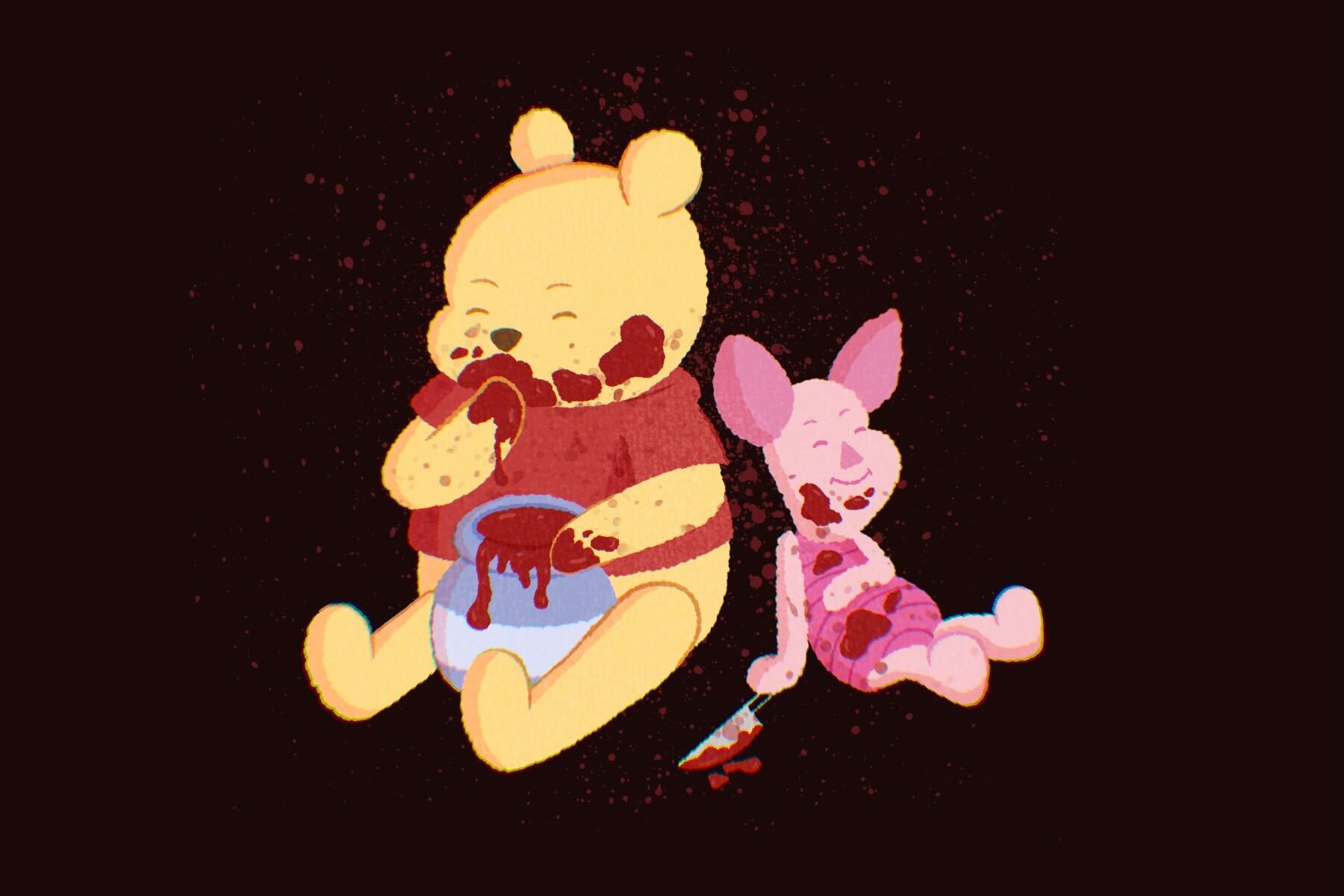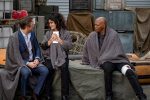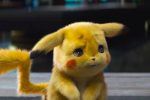In 1926, A. A. Milne published the children’s novel “Winnie-The-Pooh.” Based on the toys of his son, Christopher Robin Milne, it’s a collection of charming tales about a stuffed, honey-loving bear named Winnie The Pooh, his friends and their adventures in the Hundred Acre Woods. A second collection followed in 1928 titled “The House at Pooh Corner.” These two books quickly grew to become bestsellers in Europe and the United States, where they would be adapted into a series of beloved animated films by Disney.
For over 40 years, Disney enjoyed exclusive ownership of the bear and the books from which he came, having first purchased the rights to Milne’s works in the early 1960s. With “Winnie the Pooh” firmly in their grasp, Disney transformed the books into a massive franchise that included “The Tigger Movie,” “Pooh’s Heffalump Movie” and “Pooh’s Grand Adventure.” Disney even turned Pooh’s storyline into a ride at several of its theme parks.
On the first day of 2022, however, Disney lost some of its grip on the original work. That’s because any work made before 1927 entered the public domain. Works such as Felix Saltan’s “Bambi,” Ernest Hemingway’s “The Sun Also Rises” and William Faulkner’s “Soldier’s Play,” are also up for grabs by anyone and everyone. Joining these stories is A.A. Milne’s “Winnie-The-Pooh.” Although Disney still owns the copyright to their version of Pooh, the familiar red-shirted bear who shimmies up trees to reach beehives, anyone can use Milne’s original creation for their own interpretation.
Pooh’s entry into the public domain has produced some interesting results. Early in the year, Mint Mobile released a commercial that features Ryan Reynolds reading a book called “Winnie-The-Screwed,” where Edward Bear realizes he hasn’t yet switched to the carrier. Around the same time, a comic by artist Luke McGarry depicting a naked Pooh explaining his public-domain status to Piglet was posted on Twitter, amassing over 41,000 likes. But the biggest announcement wouldn’t come until late May when it was officially announced that Pooh, a key icon of childhood innocence and warm-heartedness, would be turned into a ruthless serial killer in an upcoming horror film titled “Winnie The Pooh: Blood and Honey.”
Written and directed by Rhys Frake-Waterfield, “Blood and Honey” will show audiences Pooh and his dear friend Piglet stalking and killing people in the dead of night. According to Waterfield, the duo’s murderous ways took form as a result of Christopher Robin abandoning them for college and neglecting to feed them.
“Because they’ve had to fend for themselves so much, they’ve essentially become feral,” Waterfield said in an interview. “So, they’ve gone back to their animal roots. They’re no longer tame: They’re like a vicious bear and pig who want to go around and try and find prey.”
Don’t expect Pooh and Piglet to start singing songs, discussing friendship, or doing anything you’d expect out of a Disney film — in “Blood and Honey,” those days are long over. In fact, due to their growing hunger and desperation, the two, as Waterfield claimed, “had to resort to eating Eeyore.” You heard him right: The depressed donkey is now being digested in Pooh’s rumbly tummy. When Christopher Robin returns to check up on his old friends with his wife, the results are not the same as in Disney’s 2018 film “Christopher Robin,” where Pooh and his friends happily reunite with their beloved boy. Instead, the story takes a turn for the unexpected.
“They get enraged when they see them,” Waterfield says. “All of the hatred they’ve built up over the years unleashes and then they go on this rampage.”
When it comes to violence, this film won’t hold back. As Pooh and Piglet have lived alone in the Hundred Acre Wood for so long, without anyone to help or properly nurture them, they’ve “built up these really sadistic tendencies amongst themselves” and they “just target people to kill them, to eat them as a way of living … just food basically.” One particular scene Waterfield spoke of was the “jacuzzi scene,” in which Pooh and Piglet sneak up behind a girl bathing in a jacuzzi, capture and hog-tie her, and then crush her head with a car.
“It’s scary, but there’s also funny bits,” Waterfield said, “because there’s shots of Winnie the Pooh in a car and seeing him with his little ears behind the wheel and like slowly going over there [to kill her].”
The movie will also be funny, as Waterfield knows very well that his film’s premise is downright absurd and will probably not earn a nomination for best picture at the Oscars.
“When you try and do a film like this, and it’s a really wacky concept. It’s very easy to go down a route where nothing is scary and it’s just really ridiculous and really, like, stupid,” he said. “We wanted to go between the two.”
Although Pooh, Piglet and Eeyore’s gravestone will be featured in “Blood and Honey,” “Winnie The Pooh” fans should not expect to see the bouncy, fun-loving Tigger anytime soon. As Tigger was originally introduced by Milne two years later, he has not yet crossed the public domain threshold; Disney still owns the rights to the character until 2024. But once that year arrives, who knows? Perhaps Waterfield will create a sequel in which Tigger decides to join Pooh and Piglet’s murderous rampage. Or perhaps he, too, will be eaten.
The first images of “Blood and Honey” were released online on May 27, starting an internet and news outlet frenzy. Pooh fans and movie-goers alike voiced their shock, disbelief, horror, disgust and admiration for the upcoming flick, which still has no set release date. Of course, people inevitably made the comparison between “Blood and Honey” and Disney’s “Pooh” films, which Waterfield is well-aware of.
“No one is going to mistake this [for Disney],” he said. “When you see the cover for this and you see the trailers and the stills and all that, there’s no way anyone is going to think this is a child’s version of it.” Judging by the images alone, you can tell. Aside from an image of the “jacuzzi scene,” there are also images of Pooh behind the wheel of a car with a menacing red glow on his face, a towering Pooh looming over somebody while opening a pot of honey and a woman going down a flight of stairs with the words “GET OUT” smeared in blood on the window in front of her. Waterfield also made more obvious efforts to differentiate between his version and Disney’s version of Pooh so as to avoid being sued for copyright infringement. Pooh is set to forgo his little red shirt in favor of a lumberjack suit and Piglet will don a black uniform.
“Winnie The Pooh: Blood and Honey” is an interesting start to what could possibly be a whole slew of Pooh-related media by entertainment studios the world over. Much like Arthur Doyle’s “Sherlock Holmes,” which has since received numerous spin-offs, TV shows, movies, retellings and spoofs after its release to the public, “Winnie-The-Pooh” could grow to become more than what it once was. There could be an explosive “Pooh” action flick starring Dwayne Johnson, or maybe a “Pooh” retelling in which Pooh and his friends are represented by talking kitchen appliances. There’s a lot of time ahead, so people should all sit back and wait to see what becomes of their favorite stuffed bear.
















